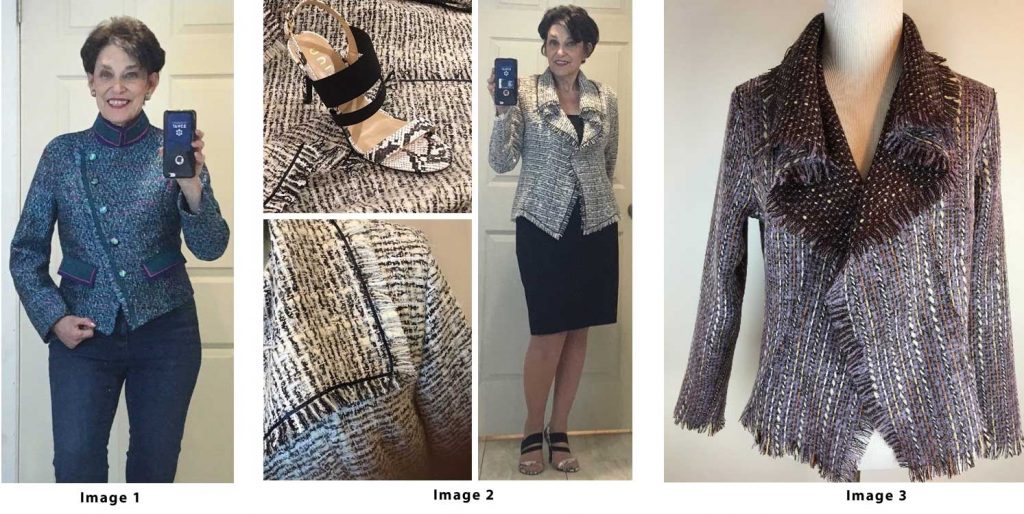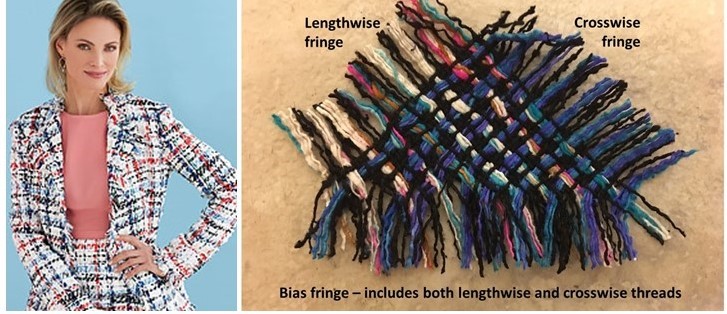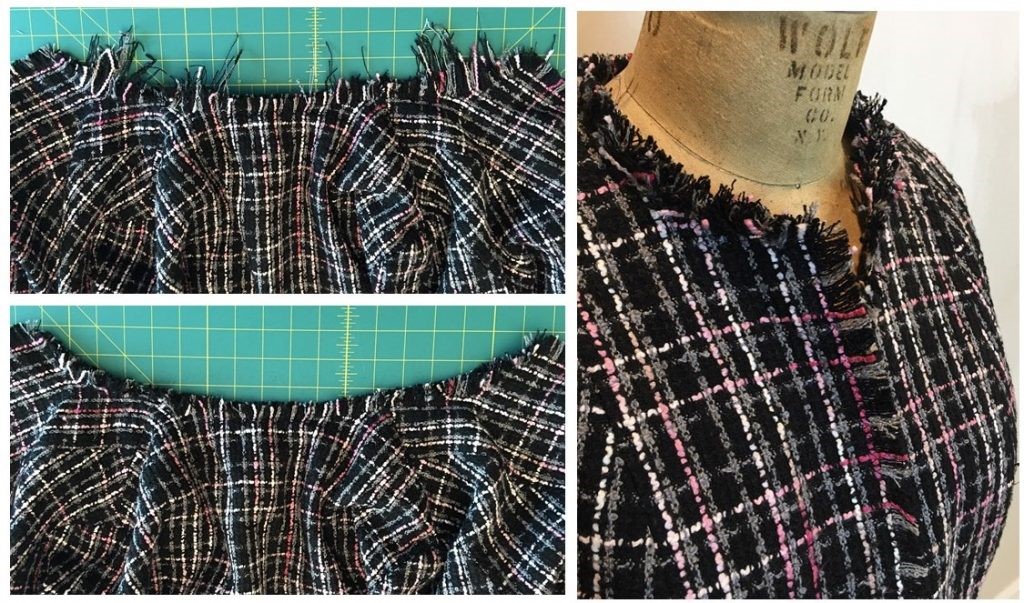There are times when you want to add a bit of texture and fun to a project, but you may not be quite sure what to do. Think about encasing something under tulle, which serves to hold it in place and protect the addition at the same time.
What to encase?
Depending on the project you’re making, there are many choices. Silk flowers are a fun addition to home décor items or special-occasion wear. They’re affordable and look beautiful. Envision a long skirt fully embellished with silk flowers. OK, if you’re not quite that ambitious, think about a collar, pocket or tote bag. Take apart the flowers to use single layers or individual petals.
Bits of novelty threads, yarns or trims are another option. They can form a pattern or be totally free-form embellishments.
A collage of fabric bits is another idea—those tiny but colorful slivers of fabric you trim with a rotary cutter are ideal, as are small shapes of fabric purposefully cut for this technique. If the project isn’t going to be washed (like a wall hanging), then you can think more broadly to small rocks, shells, photos, etc.
Over the Top
Tulle is ideal for going over the top of your treasures—it’s very thin and almost invisible, depending on the color used and the base color, but it adds a “just-right” layer to help hold things in place.
Tulle is a fine mesh fabric found in the special occasion department of the fabric store, and it comes in myriad colors. It’s lighter and finer than the holes in net for a more invisible look. Note that some tulle is nylon and will easily melt, so check the fiber content and adjust the iron temperature as needed before pressing.
Covering Up
In addition to the items you want to encase, some fabric glue is helpful to hold multiple items in place. If you prefer not to glue, then use long pins to temporarily hold things until the finish stitching is done.
Cut the base fabric in the size needed. For example, if it’s a garment and you want to embellish the pocket, collar or perhaps an entire skirt, cut the pattern piece from the fashion fabric. If it’s a pillow or wall hanging, cut the fabric pieces as required by the pattern.
Position the accent items where you want them on the right side of the base fabric. Add a dot of fabric glue behind to hold it place—don’t cover the entire surface as you want to have some dimension. If you’re using silk flower petals, just a glue dot at the center is sufficient for securing.
Audition your creation with different colors of tulle to see the variation in look depending on the color used. When you’ve chosen an appropriate color, cut the tulle about 1” larger than the base fabric shape and press out any wrinkles. If your encasements, are thicker, cut the tulle larger to allow for full coverage.
Pin the tulle over the base fabric, placing some pins along the edges and some in and between the encased accents.
Now comes the fun—adding embellishments to hold things in place.
Embellishing
To help hold items in place, think about hand- or machine stitching around them to make a “pocket”, add some beads through the layers (especially nice for silk flower petals), or add hand- or machine embroidery to keep things where you want them.
Whatever technique is done over the layers keeps the tulle from being loose and “bagging out” if it’s not anchored in some way.
You can use free-motion stitching to go around shapes, or keep the presser foot on for a more controlled look. Single motifs of decorative stitches are ideal for flower centers or weave rows of decorative stitches in and out of the encased items.
For machine embroidery motifs, add a layer of stabilizer underneath for hooping. When hand-stitching, sew through both the tulle and base layer, and the same for attaching beads, charms or baubles. The more stitching that’s done, the flatter the finished piece will be.
When the embellishing process is complete, stitch around the edge of the entire piece and trim the tulle to match the base shape.
Finishing
Use your embellished piece in your finished garment or project, just as you would if it were plain fabric—you’ve created your own unique fabric worthy of compliments and questions about how you did it, as the tulle is elusive.
~Linda Griepentrog is the owner of G Wiz Creative Services and she does writing, editing and designing for companies in the sewing, crafting and quilting industries. In addition, she escorts fabric shopping tours to Hong Kong. She lives at the Oregon Coast with her husband Keith, and three dogs, Yohnuh, Abby, and Lizzie. Contact her at gwizdesigns@aol.com.





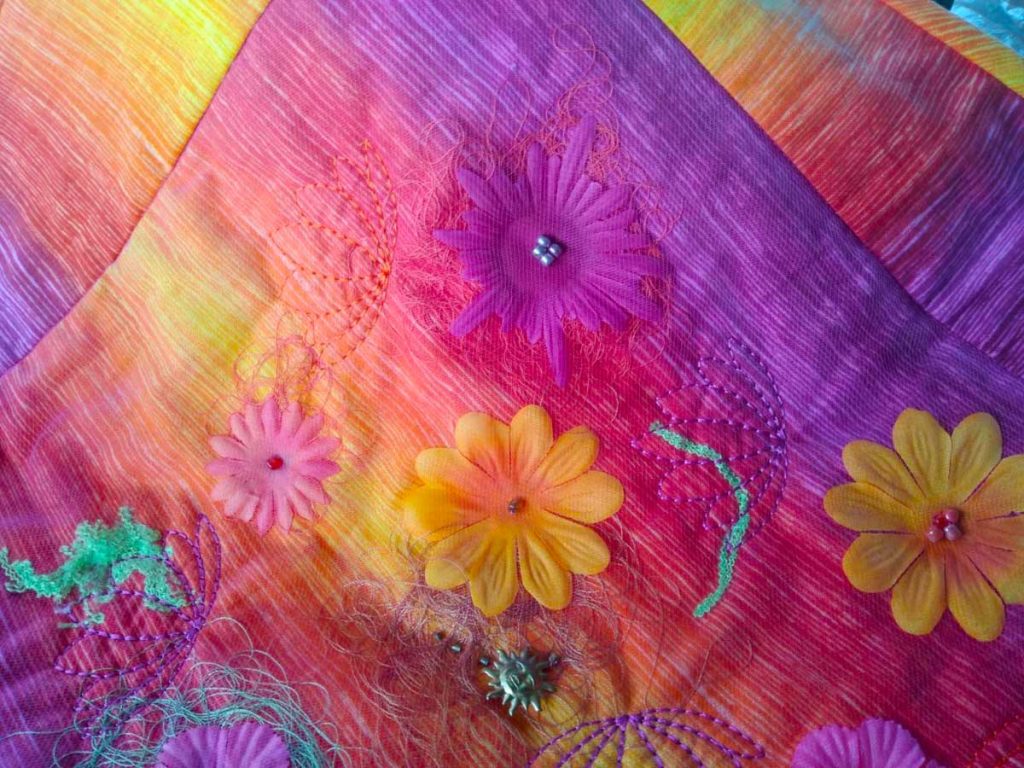
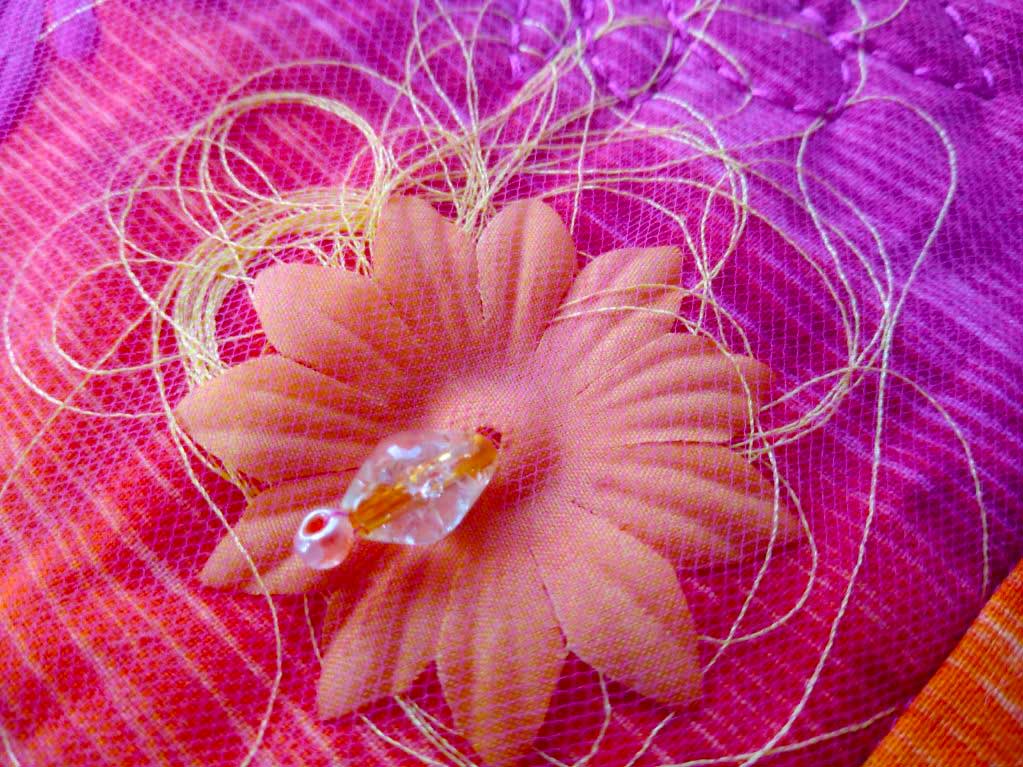
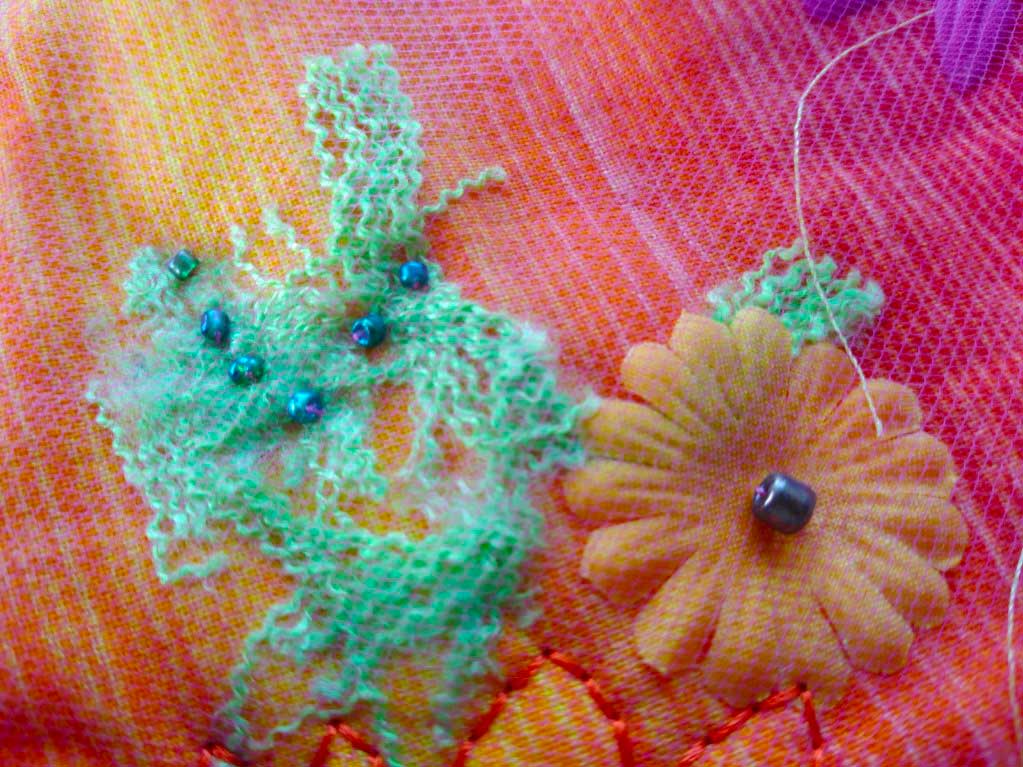
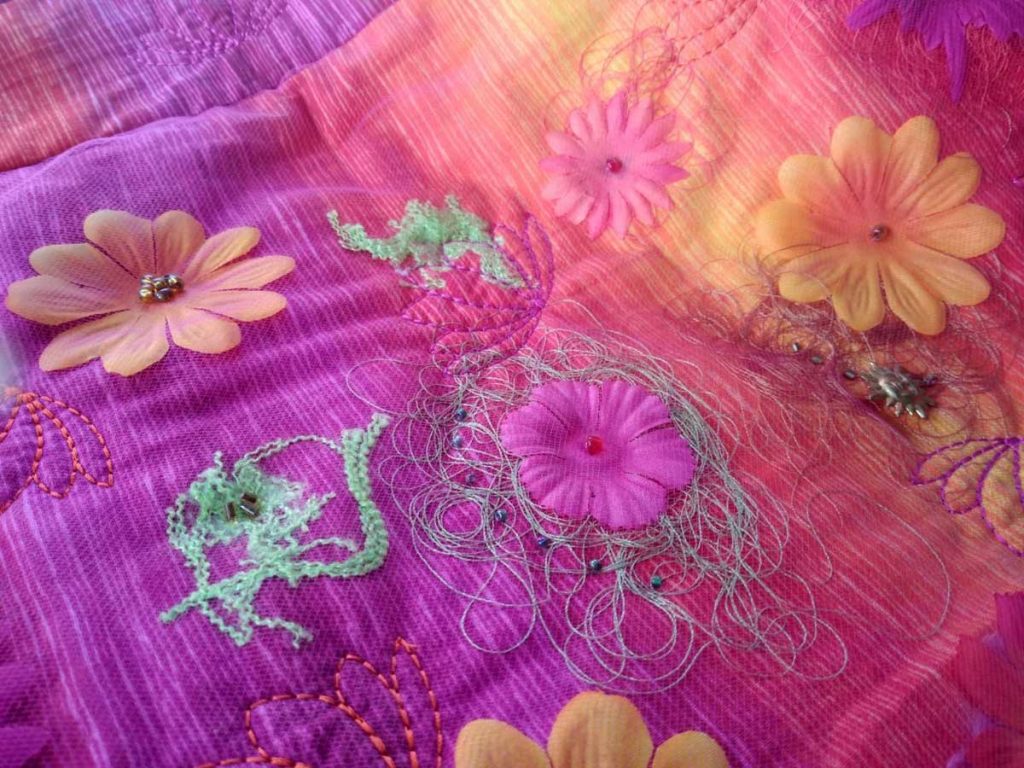
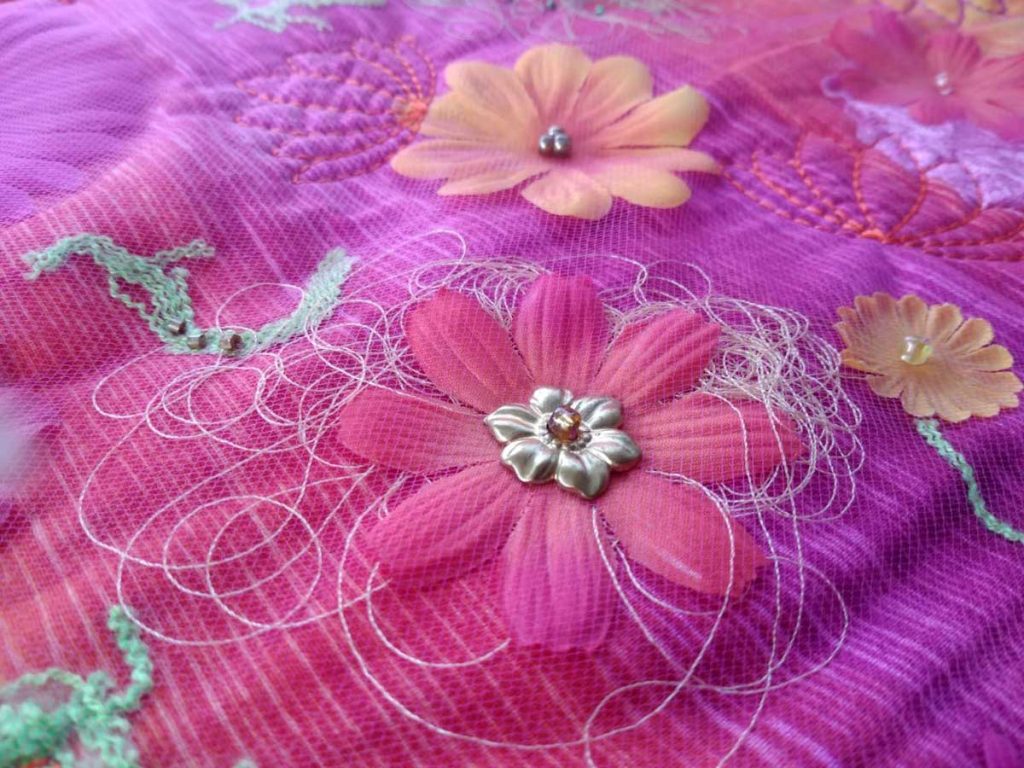
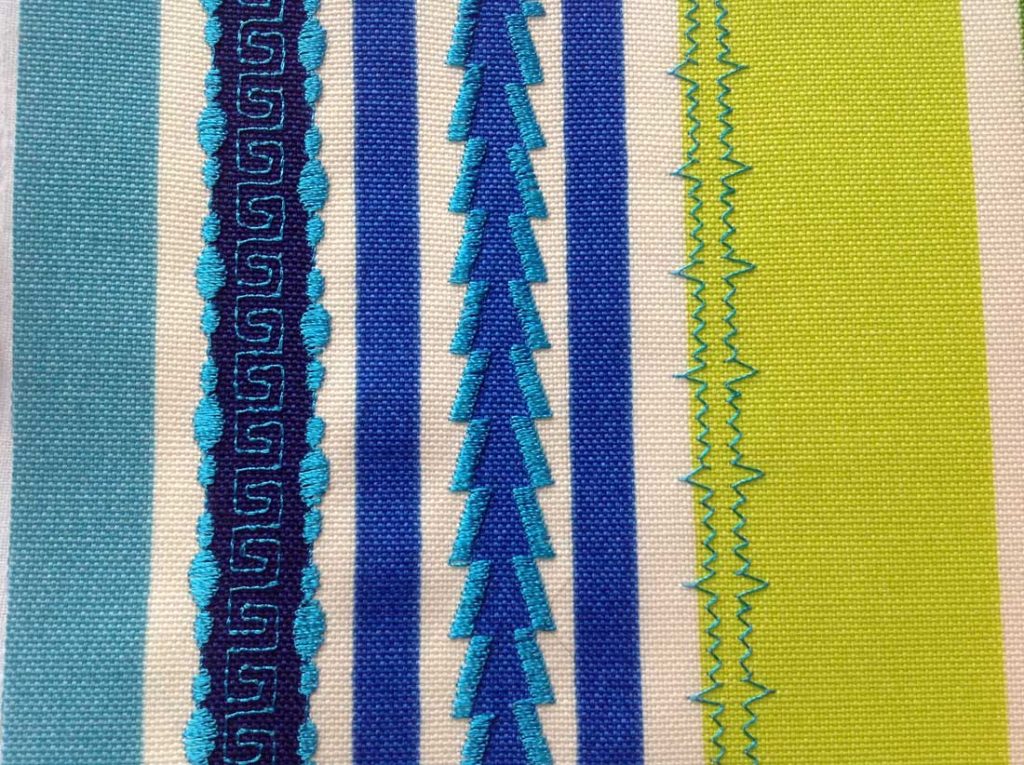
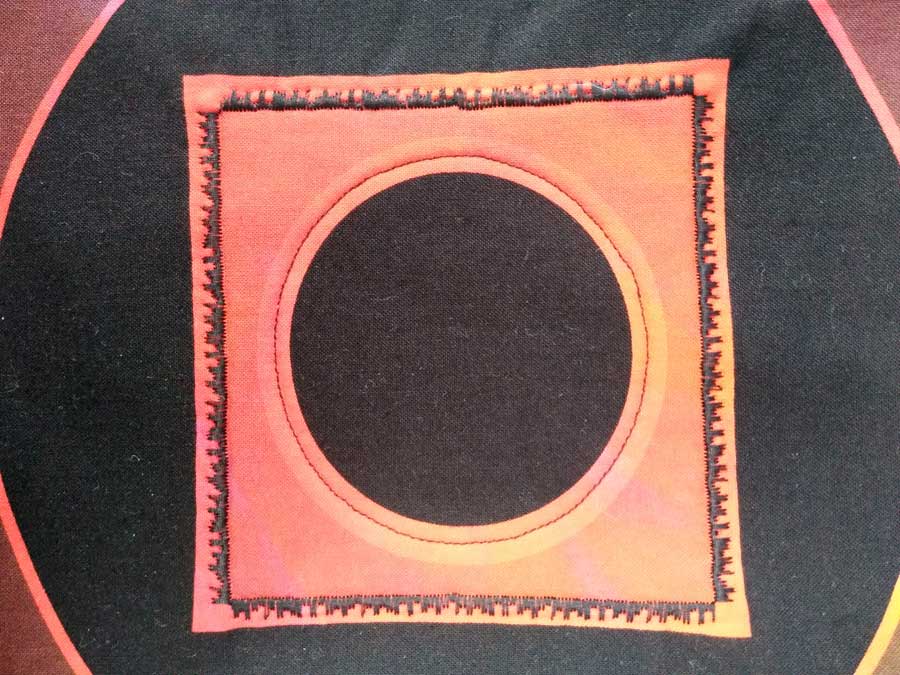
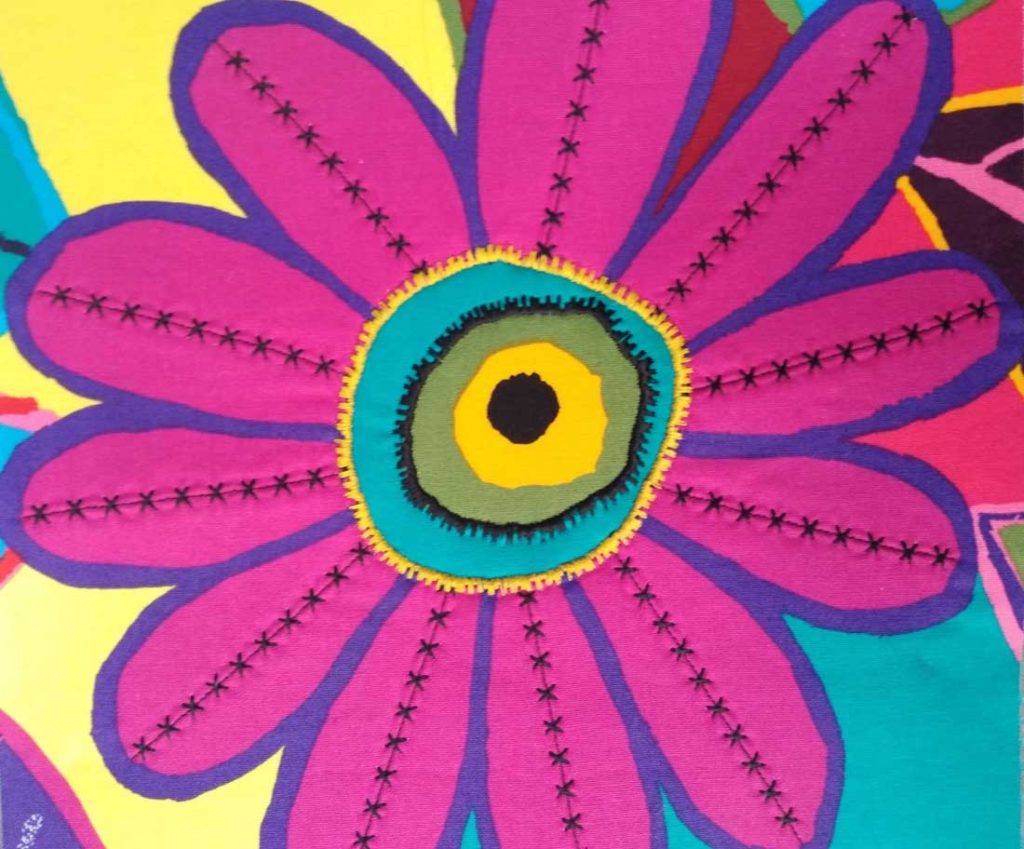
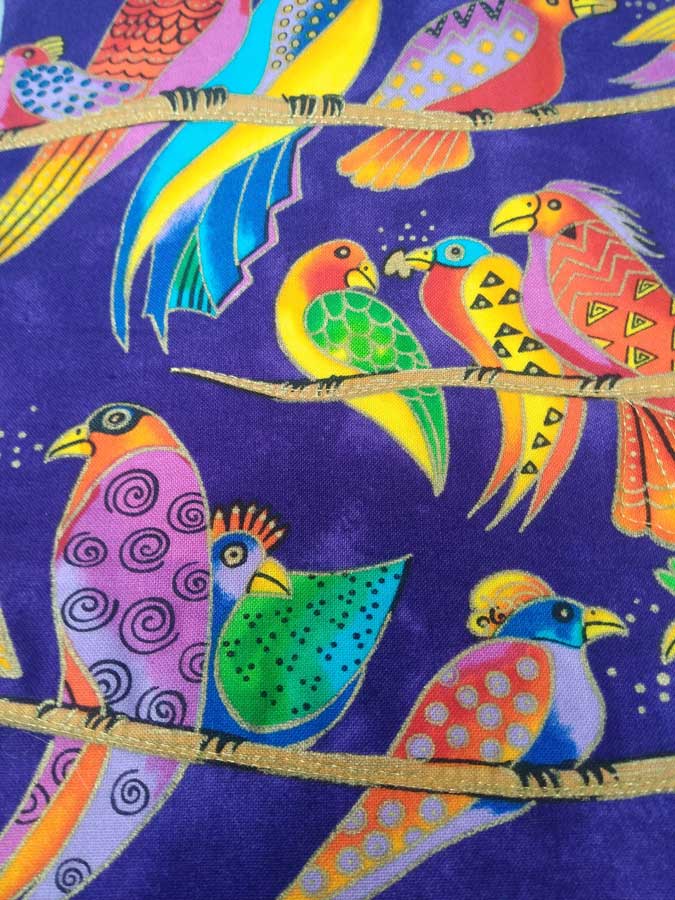
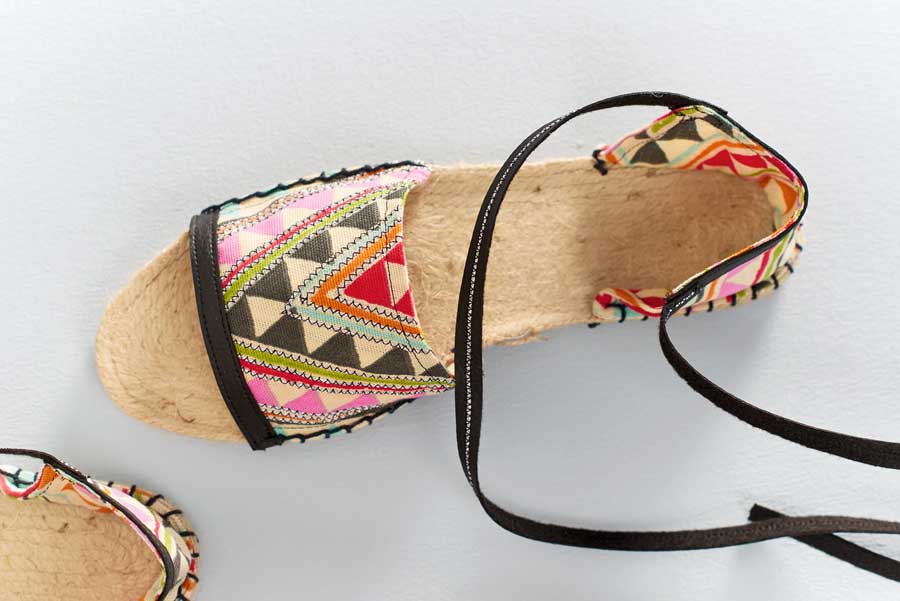
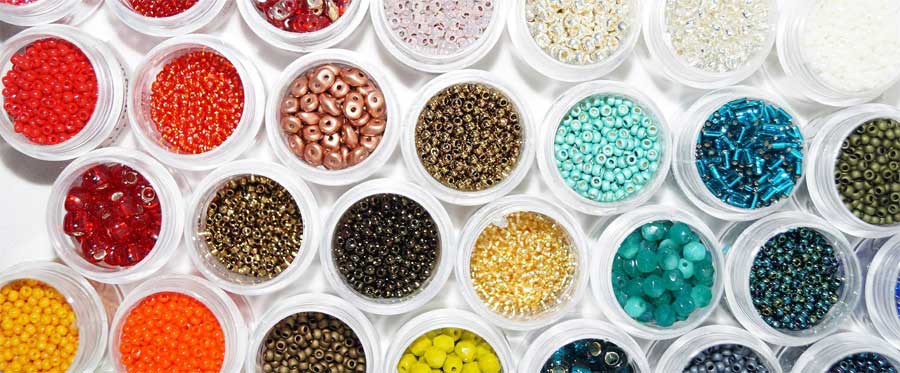
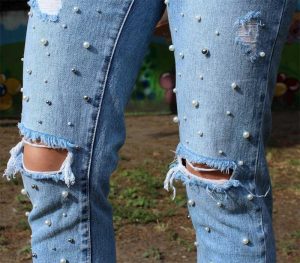
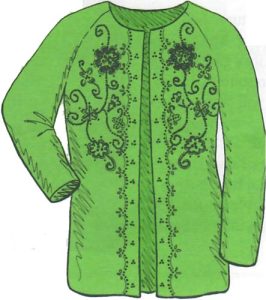 The list of fabrics suitable for beading ranges from laces and chiffons to very heavy fabrics, such as tapestries and leathers. Besides fabric, beading can also be done on lace trims, ribbons, and 3-D embellishments (such as fabric flowers and crocheted rosettes). Because bead work becomes heavy very fast, especially when using glass beads, your fabric may require some sort of support. If this is the case, determine which stabilizing medium will prevent distortion and hold your design in its original shape. Choices include stabilizers made for machine embroidery, flannel (a favorite choice), muslin, organza, self fabric, interfacing, and grosgrain ribbon. Sometimes the best stabilizer might even be another bead, just like you would use a flat button to back a heavier button on a leather jacket.
The list of fabrics suitable for beading ranges from laces and chiffons to very heavy fabrics, such as tapestries and leathers. Besides fabric, beading can also be done on lace trims, ribbons, and 3-D embellishments (such as fabric flowers and crocheted rosettes). Because bead work becomes heavy very fast, especially when using glass beads, your fabric may require some sort of support. If this is the case, determine which stabilizing medium will prevent distortion and hold your design in its original shape. Choices include stabilizers made for machine embroidery, flannel (a favorite choice), muslin, organza, self fabric, interfacing, and grosgrain ribbon. Sometimes the best stabilizer might even be another bead, just like you would use a flat button to back a heavier button on a leather jacket.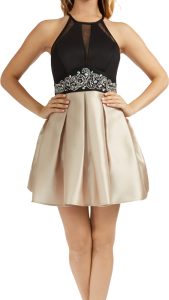
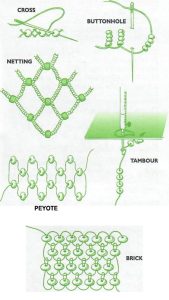
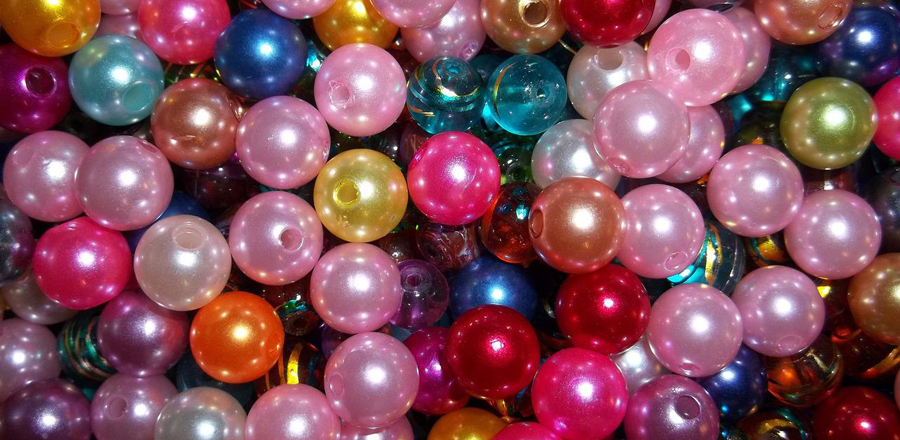
 Fringe, whether you choose to love it or leave it, has undoubtedly stood the test of time. Dating back to 3000 B.C. in Mesopotamia, fringe became popular as a fashion embellishment in the 1920’s, then resurfaced again in the 50’s, and came full circle in the 60’s, 70’s and 80’s. Popular again today, it can be casual and trendy or utterly timeless, like in the garments shown here. Enjoy some ideas from Nancy Nix-Rice on these beautiful fringe accents.
Fringe, whether you choose to love it or leave it, has undoubtedly stood the test of time. Dating back to 3000 B.C. in Mesopotamia, fringe became popular as a fashion embellishment in the 1920’s, then resurfaced again in the 50’s, and came full circle in the 60’s, 70’s and 80’s. Popular again today, it can be casual and trendy or utterly timeless, like in the garments shown here. Enjoy some ideas from Nancy Nix-Rice on these beautiful fringe accents.